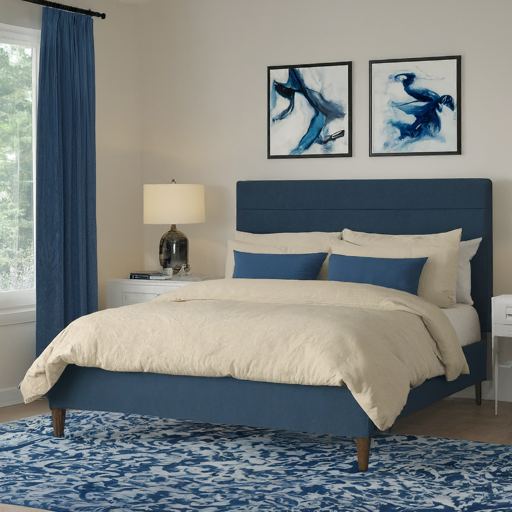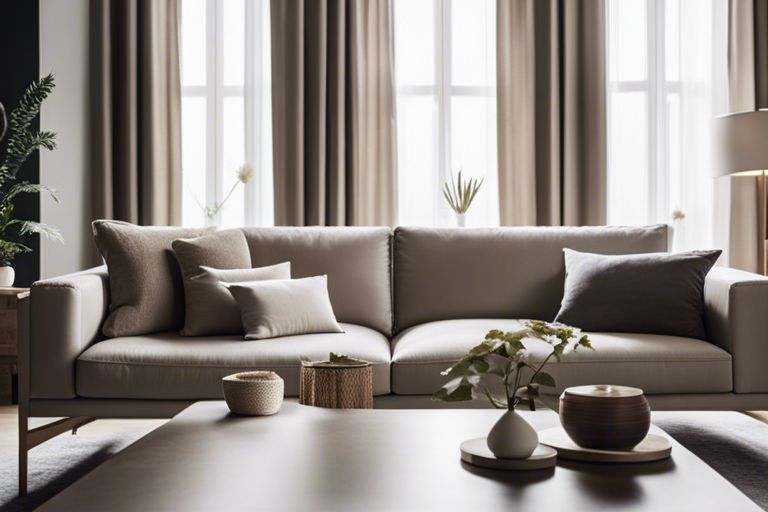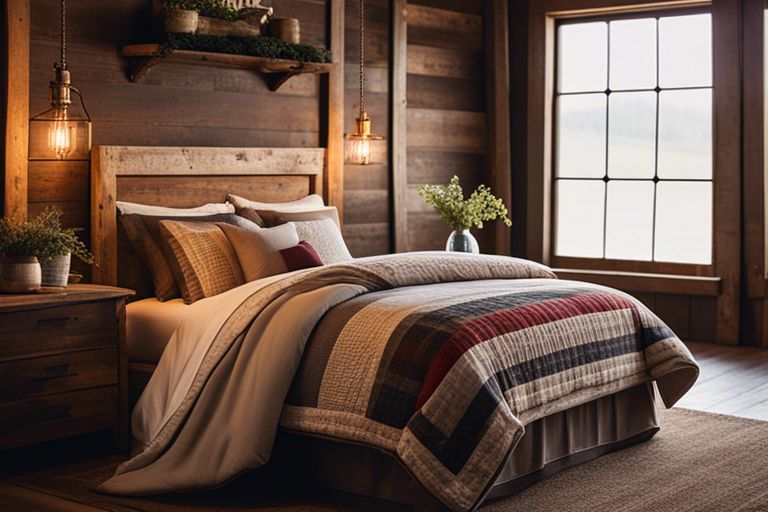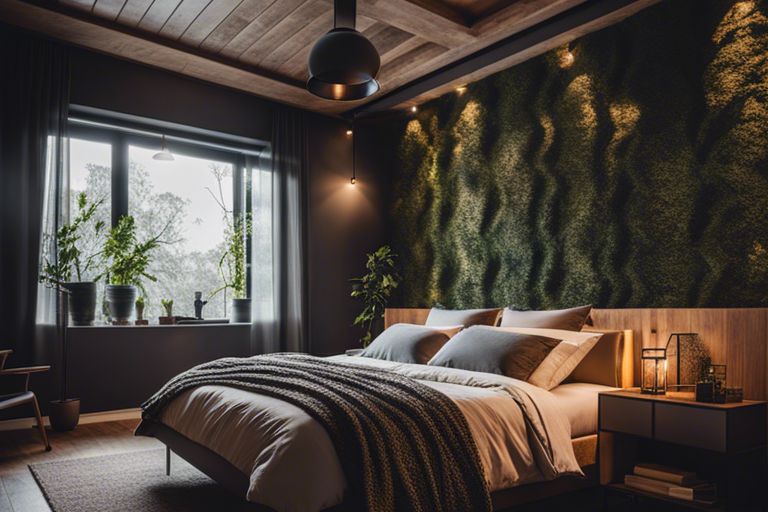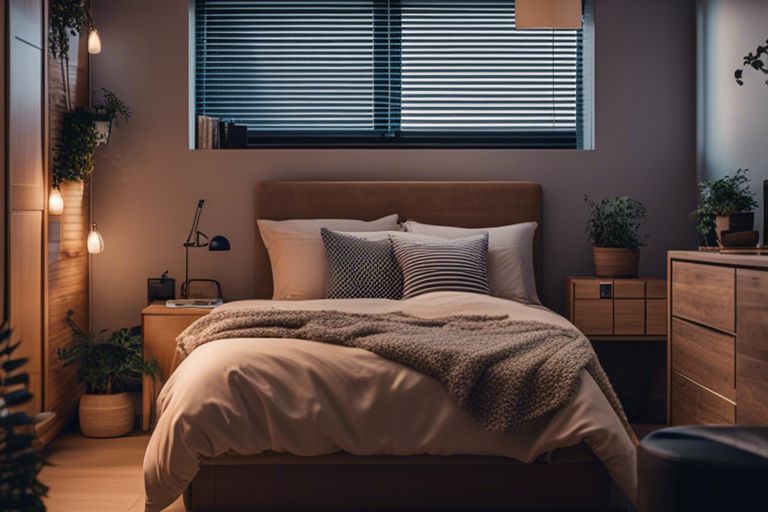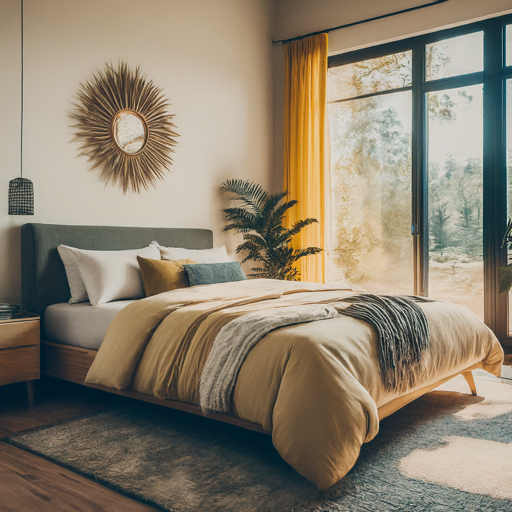80 Beautiful Bedroom Color Schemes – Inspiring Palettes with Color Chart Guide
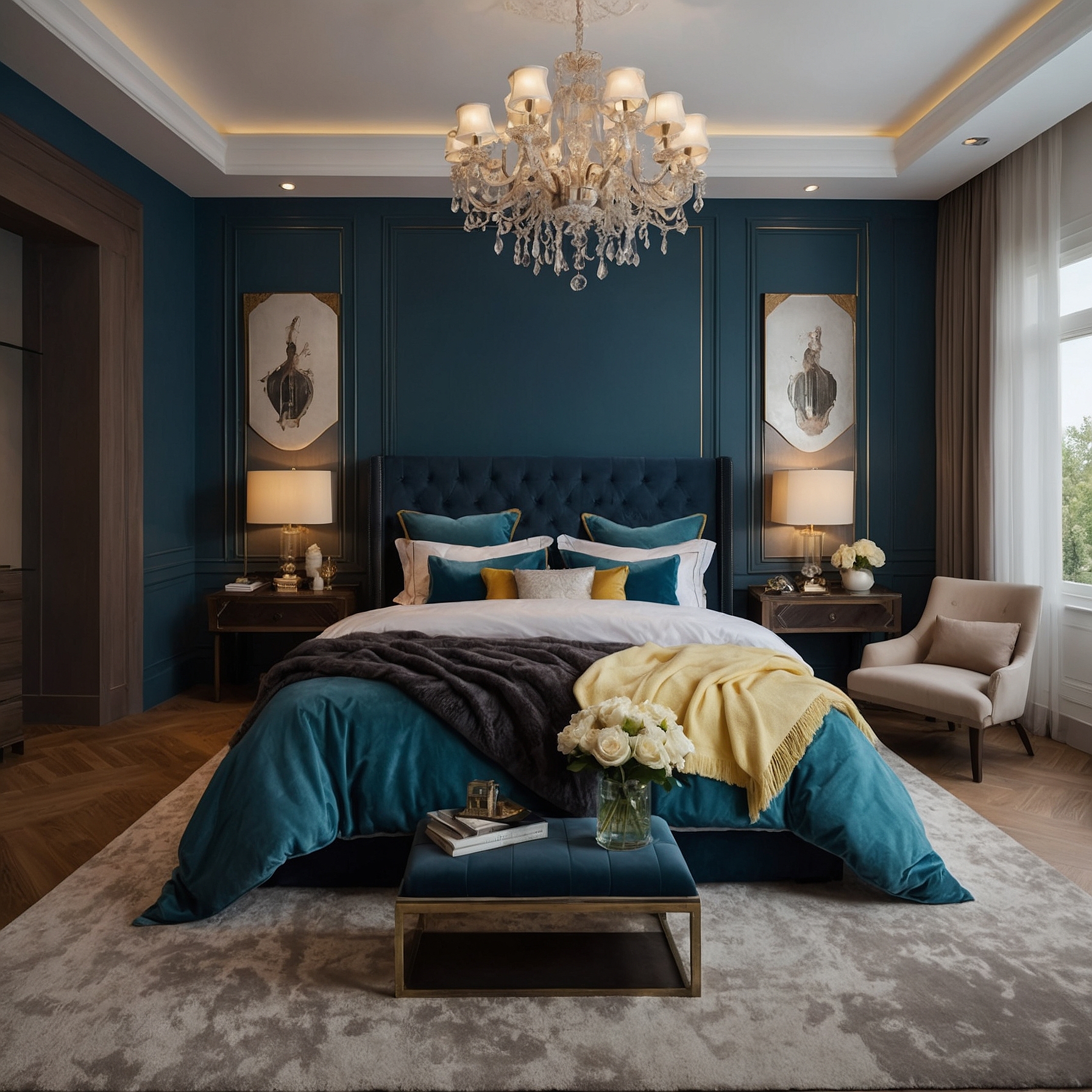
Most of us spend a significant amount of time in our bedrooms, so it’s important to create a space that reflects your style and promotes relaxation.
In this guide, I will showcase 80 beautiful bedroom color schemes that will inspire you to revamp your space.
From calming neutrals to bold and vibrant hues, there is a color palette for every taste.
Let’s explore these inspiring combinations and use the color chart guide to help you bring your dream bedroom to life.
Types of Bedroom Color Schemes

The bedroom is a place of relaxation and tranquility, so choosing the right color scheme is crucial to creating the perfect atmosphere. There are several types of bedroom color schemes to consider, each with its own unique characteristics.
| Monochromatic Color Schemes | Complementary Color Schemes |
| Analogous Color Schemes | Neutral Color Schemes |
Monochromatic Color Schemes
Now, let’s talk about monochromatic color schemes. This type of color scheme involves using different shades of the same color. It creates a sense of harmony and simplicity in the bedroom, making it a popular choice for those who prefer a more subdued and calming environment.
Complementary Color Schemes

Schemes involving complementary colors are bold and vibrant. Complementary colors are opposite each other on the color wheel, such as blue and orange or red and green. When used together in a bedroom color scheme, they create a dynamic and visually striking look that can be energizing.
With complementary color schemes, it’s important to balance the colors properly to avoid overwhelming the space. You can achieve this by using one color as the dominant hue and the other as an accent in smaller doses.
Analogous Color Schemes
Clearly, analogous color schemes involve using colors that are next to each other on the color wheel. This creates a cohesive and harmonious look in the bedroom, as the colors naturally complement each other. Analogous color schemes are great for creating a sense of unity and flow in the space.
Understanding how to combine different hues within the same color family can help you create a visually appealing bedroom with an analogous color scheme. You can play with different shades and tones to add depth and interest to the room.
Neutral Color Schemes
One classic option for bedroom color schemes is to go with neutral colors. Neutral hues like white, beige, gray, and soft pastels create a serene and calming atmosphere in the bedroom. They serve as a versatile backdrop for adding pops of color with accessories or furniture.
Neutral color schemes are timeless and versatile, making them a great choice for those who prefer a more understated and sophisticated look in their bedroom. You can easily change up the decor and accessories without having to repaint the walls when you have a neutral color scheme as your base.
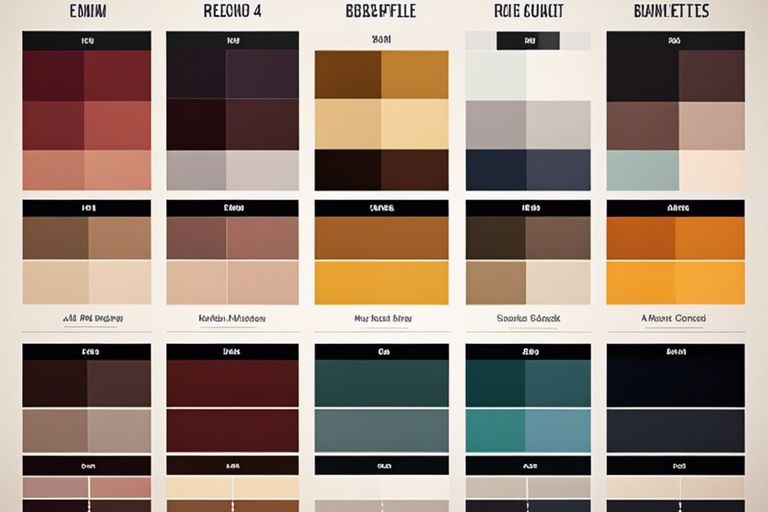
Factors to Consider When Choosing a Bedroom Color Scheme

Assuming you’re trying to decide on the perfect color scheme for your bedroom, there are a few key factors to keep in mind. Your personal style and preferences, room size and lighting, furniture and decor, as well as the mood and atmosphere you want to create, all play a vital role in choosing the right colors for your space.
Personal Style and Preferences
Any time you’re selecting a color scheme for your bedroom, it’s imperative to consider your personal style and preferences. Think about colors that make you feel happy, calm, and relaxed. Choosing hues that resonate with you will help create a space that feels comforting and tailored to your taste.
Room Size and Lighting

The size of your bedroom and the amount of natural light it receives are crucial factors to consider when choosing a color scheme. The size of the room can determine whether you should opt for light or dark colors, while the lighting can impact how certain colors appear. The right color choice can make a small room feel more spacious or a large room feel cozier.
Furniture and Decor
Consider your existing furniture and decor when selecting a color scheme for your bedroom. Your color choices should complement your furnishings and accessories rather than clash with them. Harmonizing the colors in your space will create a cohesive and visually appealing look.
Mood and Atmosphere
Personalizing your bedroom color scheme to create the desired mood and atmosphere is key. Colors can evoke specific emotions and set the tone for the room. Whether you want a serene and tranquil space for relaxation or a vibrant and energizing environment, your color choices can help achieve the ambiance you desire.
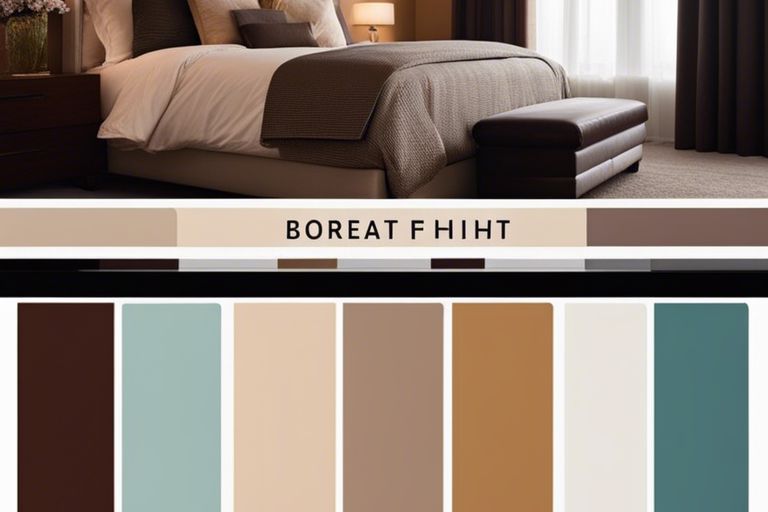
Tips for Selecting the Perfect Bedroom Color Scheme

Once again, choosing the right bedroom color scheme can make a significant impact on the overall look and feel of your space. Here are some tips to help you select the perfect color palette for your bedroom:
Start with a Neutral Base
For a timeless and versatile look, start with a neutral base for your bedroom color scheme. Neutrals like white, beige, or gray can help create a calming and inviting atmosphere, allowing you to easily incorporate pops of color through accessories or accent walls.
Consider the 60-30-10 Rule
Tips When opting for colors for your bedroom, consider following the 60-30-10 rule. This rule suggests that 60% of the room should be a dominant color, 30% a secondary color, and 10% an accent color. This formula can help you create a well-balanced and visually appealing color scheme in your bedroom.
Plus,remember that the dominant color is usually used for the walls, the secondary color for upholstery or furniture, and the accent color for accessories like pillows, throws, or artwork.
Don’t Forget About Texture and Pattern
Even if you stick to a monochromatic color palette, incorporating various textures and patterns can add depth and visual interest to your bedroom. Mix different fabrics, finishes, and prints to create a layered and dynamic look that feels cozy and inviting.
The key is to balance different textures and patterns while still keeping a cohesive color scheme throughout the room.
Test the Colors Before Committing
With the multitude of paint colors available, it can be overwhelming to choose the perfect shade for your bedroom. I recommend testing the colors on a small section of the wall before committing to a full paint job. This way, you can see how the colors look in different lighting conditions and how they complement the other elements in your bedroom.
To make the decision easier, I suggest painting large swatches on the wall and observing them at different times of the day to see how the colors change with the light.
A Step-by-Step Guide to Creating Your Own Bedroom Color Scheme

To create your own bedroom color scheme, follow these simple steps:
| Identify Your Inspiration | Choose a Dominant Color |
| Select Accent Colors | Add Neutrals and Texture |
Identify Your Inspiration
There’s no right or wrong way to choose the colors for your bedroom. Start by thinking about what inspires you the most – whether it’s a favorite piece of artwork, a beautiful landscape, or a mood you want to create in your room.
Choose a Dominant Color
Your dominant color will set the tone for your bedroom. It’s the color that will be most prominent in the space and will influence your choice of accent colors and accessories. Choose a color that you love and feel comfortable living with.
Select Accent Colors
Clearly define 2-3 accent colors that complement your dominant color. These colors will add depth and interest to your bedroom. Consider using colors from the same color family or choose complementary colors to create a striking contrast.
Add Neutrals and Texture
Understanding the role of neutrals and texture is crucial in balancing your color scheme. Neutrals like whites, creams, and grays can help tone down bolder colors and create a sense of calm. Adding textures through fabrics, rugs, and furniture can bring warmth and dimension to the room.
Pros and Cons of Popular Bedroom Color Schemes

| Soft and Soothing Pastels | Rich and Bold Jewel Tones |
| Creates a calming and relaxing atmosphere | Adds drama and luxury to the room |
| Makes the room feel light and airy | Can make the room feel smaller if too dominant |
| Easy to match with other décor and accessories | May be too intense for some people’s taste |
Soft and Soothing Pastels
Soft and soothing pastel colors are perfect for creating a serene and tranquil bedroom environment. Colors like light blue, lavender, and pale pink can help you unwind and relax after a long day. However, be cautious as pastel shades can sometimes appear too childish or lack sophistication.
Rich and Bold Jewel Tones
Some may argue that rich and bold jewel tones like deep emerald green, sapphire blue, or amethyst purple can add a touch of glamour and sophistication to your bedroom. These colors can make a strong statement and create a luxurious atmosphere. Keep in mind that using too much of these intense colors can be overwhelming and may require careful balance with neutrals.
Cons
Calming and Natural Earth Tones
Now let’s talk about calming and natural earth tones such as warm browns, soft greens, and gentle terracottas. These colors can help bring a sense of grounding and connection to nature into your bedroom. However, be cautious as using too many earth tones can make the room feel dull and uninspiring.
Schemes
Bright and Energizing Brights
Clearly, incorporating bright and energizing colors like sunny yellow, electric blue, or vibrant orange can add a pop of energy and excitement to your bedroom. These colors can help create a cheerful and lively atmosphere. Just remember, too much brightness can be overwhelming and may disrupt your sleep quality.
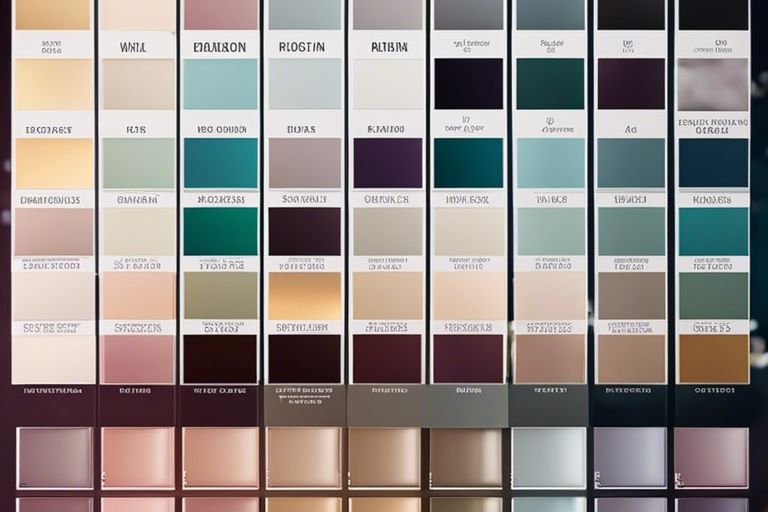
Using a Color Chart Guide to Refine Your Palette

Understanding Color Harmony
Despite the plethora of colors available, understanding color harmony is imperative when creating a cohesive bedroom color scheme. Some colors work well together, while others may clash. By referring to a color chart guide, you can easily identify complementary, analogous, or monochromatic color schemes that suit your taste.
Creating a Color Board
The use of a color chart guide can help you create a color board that visually represents your bedroom color scheme. The color board can include paint swatches, fabric samples, and images that inspire you. The result is a tangible visual aid that helps you see how the colors work together in your space.
Experimenting with Different Shades and Tints
Another way to refine your bedroom color scheme is by experimenting with different shades and tints of your chosen hues. Color charts usually offer a range of shades and tints for each color, allowing you to find the perfect balance between light and dark tones in your palette.
Finalizing Your Color Scheme
Guide yourself with a color chart to make final adjustments to your bedroom color scheme. By comparing different colors and their variations side by side, you can ensure that your palette is harmonious and balanced. With the help of a color chart guide, you can confidently finalize your color choices for a beautifully coordinated bedroom.
Shades and tones play a crucial role in creating depth and dimension in your bedroom color scheme. By carefully selecting and refining your palette with the assistance of a color chart guide, you can achieve a harmonious and visually appealing space that reflects your personal style.
Final Words
On the whole, exploring these 80 beautiful bedroom color schemes has been a delightful journey. I hope you found inspiration and guidance for creating your own dream bedroom palette. Bear in mind, a carefully chosen color scheme can bring harmony, tranquility, and style to your personal space. Happy decorating!

